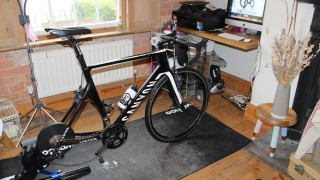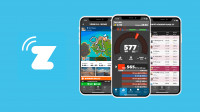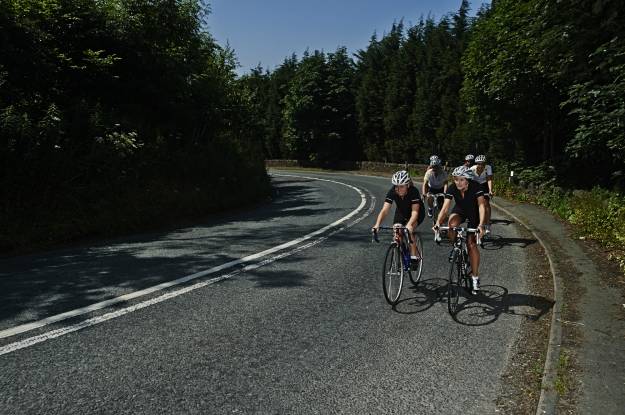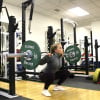Knowledge Level: Intermediate
With improved indoor trainers, virtual reality worlds such as Zwift to ride and race in and the proven benefits of hitting the weights over the winter, is there a valid argument for doing the bulk of your winter training indoors? We examine the pros and cons of an indoor only approach.
Strength work
Whether you do your cycling indoors or outside through the winter, some strength work should definitely feature in your training plans. Although you may notice a short-term detrimental effect to your riding, come the spring you’ll reap both performance and injury prevention gains.
Our 12-week “Real Life” Winter Training Plan schedules in two strength sessions each week and most of our other Digital Training Plans have an option for at least one cross-training session each week.
Find out more about Winter Strength Training for Cycling.
Boredom
In the bad old days, indoor cycling training meant staring at a wall, a piece of paper with your intervals scribbled on or, if you were lucky, some music and maybe some old cycling footage.
Now, with online platforms such as Zwift and smart trainers, the indoor cycling experience is an infinitely more enjoyable and engaging experience. With structured workouts, groups rides where you can interact with other riders, races for all levels of riders and constantly expanding worlds, the boredom aspect of indoor cycling has definitely been banished.
British Cycling Zwift Member Benefits

Specificity
On one hand, indoor cycling allows you to make your training incredibly specific. Intervals can be exactly the duration and intensity you require and, especially if you’re using a smart trainer and Erg Mode, there’s no hiding.
However, if you’re focusing predominately on sportives, there’s no escaping the need for longer endurance focused rides. Yes, these can be done indoors but to log three or four hour rides on an indoor trainer takes a lot of discipline and a resilient backside.
That said, if your sportive season doesn’t start until late spring or early summer, maybe those longer training rides can be left until the weather improves?
Safety
Wet roads, fallen leaves, snow and ice can all mean that winter roads aren’t necessarily the best place for focused training sessions. An indoor trainer allows you to concentrate 100% on the efforts you’re doing without having to worry about potential hazards or other road users.
Convenience
If you’re short of time and are having to squeeze your training in before or after work then an indoor trainer is an incredibly convenient and time effective option. If you’ve got your trainer set-up and ready to go, there’s far less pre-ride faff than riding outdoors, you can do exactly the efforts you need to do and no post-ride bike cleaning, apart from wiping up sweat. Also, if you’re unable to leave the house due to childcare or other reasons, an indoor trainer means you can still “ride”.
Bike Handling
Probably the biggest issue with doing the majority of your cycling on an indoor trainer is the negative impact it can have on your bike handling and group riding skills. For this reason, if you do decide to go down the indoor route this winter, try to get out on the road before your first event in the spring.
Rollers are excellent for developing bike handling skills and balance indoors but aren’t as effective as a “turbo” style trainer or static bike for the majority of workouts as they don’t develop sufficient load. However, if you’ve got the room and the budget, supplementing your regular indoor sessions with some roller work is a great idea.

Conclusion
There are certainly a lot of benefits to indoor training during the winter and we recognised this when creating our 8-week Indoor Time Efficient Training Plan. Platforms such as Zwift have made indoor training far more tolerable and, if your focus is on quality rather than quantity, indoor workouts are hard to beat.
That said, you do need to remember that your cycling skills are as important as your engine and need to factor this in. Also there’s no denying the enjoyment and mental benefits that getting out and riding for real can give you. Don’t forget that, even if the roads are icy or snow covered, you can still get out on the trails.
So, if your focus is on spring and summer events, there’s probably no harm in hunkering down indoors through the worst of the winter and arguably, in terms of training quality, some benefits. Just remember to factor in enough time in the spring to get in those longer endurance focussed rides and to polish up your handling skills.














